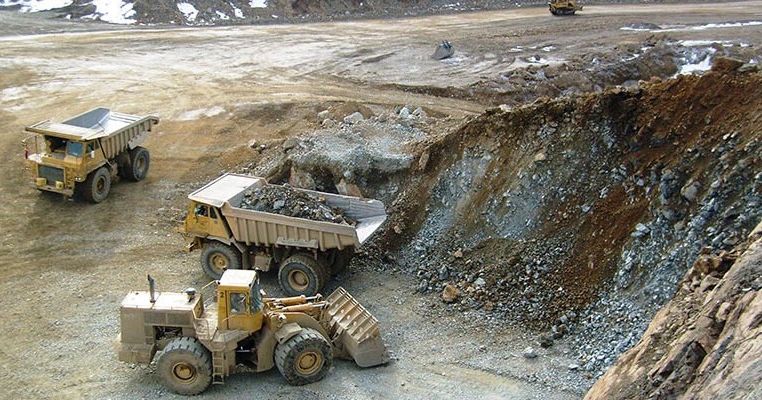News
Not Enough Copper to Support EV Transition, Study Says

Copper is important for the transition to electrical automobiles, however a research from professors on the College of Michigan and Cornell College expresses doubt that sufficient might be discovered to fill the demand, and suggests mass adoption of hybrids may very well be a simpler various.
“Copper is the mineral most basic to the human future as a result of it’s important to electrical energy technology, distribution, and storage. Copper availability and demand decide the speed of electrification, which is the inspiration of present local weather coverage,” in keeping with the research, which was sponsored by the Worldwide Vitality Discussion board.
The Discussion board is the world’s largest worldwide group of power ministers from 70 international locations and contains each producing and consuming nations. It has a broad mandate to look at all power points, together with oil and fuel, clear and renewable power, sustainability, power transitions and new applied sciences.
The research from U-M and Cornell, in Ithaca, NY, concludes copper can’t be mined shortly sufficient to maintain up with present U.S. coverage tips to transition the nation’s electrical and automobile infrastructure to renewable power.
“Many research have raised issues that copper provide can not meet the copper calls for of each the ‘inexperienced power’ transition and equitable international growth, however the common presumption persists that the copper wanted for the inexperienced transition will one way or the other be accessible. This needn’t be the case for even step one of car electrification,” the research notes.
“To impress the worldwide automobile fleet requires bringing into manufacturing 55% extra new mines than would in any other case be wanted,” the research says. “However, hybrid-electric automobile manufacture would require negligible further copper mining.”
The European Union expects to ban automobiles with internal-combustion engines by 2035, the identical 12 months the state of California expects to finish gross sales of ICE automobiles.
To satisfy the copper wants of electrifying the worldwide automobile fleet, as many as six massive new copper mines should be introduced on-line yearly over the subsequent a number of a long time. About 40% of the manufacturing from new mines will likely be required for electrical vehicle-related grid upgrades, the research says.
The U.S. Inflation Discount Act requires 100% of vehicles manufactured to be electrified by 2035 (https://www.sustainability.gov/federalsustainabilityplan/fleet.html). The European Union additionally is looking for electrical automobiles by 2035 and in China, the world’s largest marketplace for new automobiles, greater than 1 / 4 of latest automobiles offered are EVs.
However an EV requires three to 5 instances as a lot copper as an ICE automobile – to not point out the copper required for upgrades to the electrical grid (see graphic, beneath).
“A standard Honda Accord wants about 40 kilos (18 kg) of copper. The identical battery-electric Honda Accord wants virtually 200 kilos (91 kg) of copper. Onshore wind generators require about 10 tons (9,072 kg) of copper, and in offshore wind generators, that quantity can greater than double,” in keeping with Adam Simon, U-M professor of earth and environmental research.
Says Simon, “We present within the paper that the quantity of copper wanted is basically unattainable for mining firms to provide.”
The research focuses on 120 years of worldwide knowledge from copper mining firms and calculated how a lot copper the U.S. electrical energy infrastructure and fleet of vehicles would want to improve to renewable power. It discovered that renewable power’s copper wants would outstrip what copper mines can produce on the present charge.
Copper is mined by 100 totally different firms on six continents, and the common time between discovering a brand new copper mineral deposit and getting a allow to construct a mine is about 20 years, in keeping with Simon.
The researchers discovered that between 2018 and 2050, the world might want to mine 115% extra copper than has been mined in all human historical past up till 2018 simply to fulfill “enterprise as common.” This may meet present copper wants and assist the growing world with out contemplating the “inexperienced power” transition.
“I’m an enormous fan of the Inflation Discount Act. It’s incredible. I’ve bought photo voltaic panels, batteries and an electrical automobile,” Simon says. “I’m totally on board with the power transition. Nevertheless, it must be performed in a means that’s achievable.”
As a substitute of totally electrifying the U.S. fleet of automobiles, the researchers counsel specializing in manufacturing hybrid automobiles.
“We all know, for instance, {that a} Toyota Prius has a barely higher affect on local weather than a Tesla. As a substitute of manufacturing 20 million electrical automobiles in the USA and globally, 100 million battery electrical automobiles annually, would it not be extra possible to deal with constructing 20 million hybrid automobiles?”
The researchers say growing international locations want extra copper infrastructure, comparable to constructing {an electrical} grid for the roughly 1 billion individuals who don’t but have entry to electrical energy or the roughly 2 billion individuals who would not have entry to wash water or the 4 billion individuals who would not have entry to sanitation services.
“Renewable power applied sciences, clear water, wastewater, electrical energy – it can not exist with out copper. So, we then find yourself with stress between how a lot copper we have to construct infrastructure in less-developed international locations versus how a lot copper we want for the power transition,” Simon says.
“We predict our research highlights that important progress might be made to cut back emissions in the USA,” he says. “Nevertheless, the present – virtually singular – emphasis on downstream manufacture of renewable power applied sciences can’t be met by upstream mine manufacturing of copper and different metals with out a full mindset change about mining amongst environmental teams and policymakers.”
